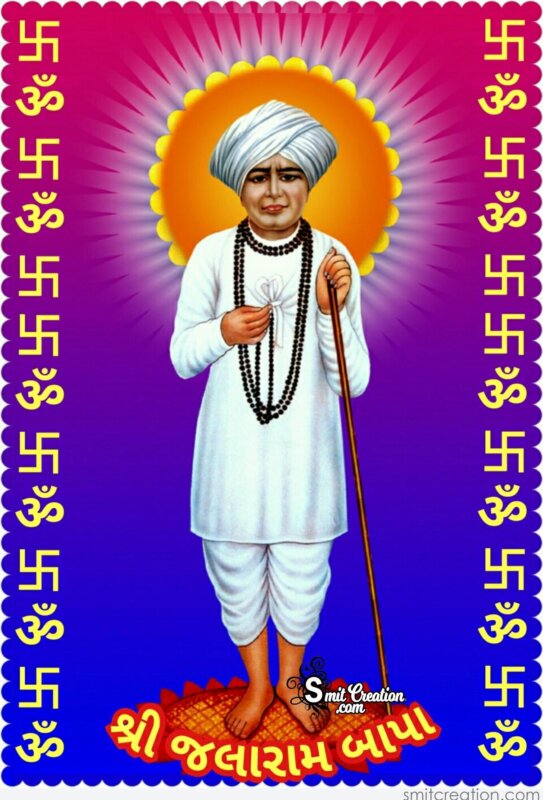The History of Lohanas and the Thakrar Family Surname Arvind Thakrar

For more information on Lohanas click here – Lohana Kings of Kashmir and Kabul & Lohanas … from Wikipedia

The Lohanas trace their roots in history right up to the time of the Aryans in the Indian sub-continent which included the present-day Afghanistan and parts of Pakistan, making theirs the oldest surviving community in the world. According to ancient Indian texts, the Aryan civilization was established by King Ikshvaku some three thousand years Before Christ (BC). He built the city of Ayodhya in 3300 BC. His 63rd descendant was the great King Raghu, who established the Rahguvanshi Dynasty.
King Raghu, belonged to the Suryavanshi lineage, thus called because they worshiped the Sun (Surya). Raghu’s grandson was the legendary King Dashratha (65th) of Ayodhya. He had four sons of whom Ram (66th), believed to be an incarnation of Lord Vishnu was the eldest and became the King after his father in 1900BC.
When Ram chose to give up his throne 40 years later in 1860BC, he split the kingdom between his two twin sons, Kush and Luv. The elder son Kush (67th) remained in the City of Ayodhya whilst the younger son Luv was given the northwest region of his kingdom (which included present-day Afghanistan). This came to be called Luv-alka or Luv’s land. Lohanas’ history begins with King Luv.
Around 580 BC, Hindu society came to be divided into four different castes based on their occupation. These four castes (in order of ranking) were Kshatriyas (warriors, holders of authority and land-owners), Brahmins (priests and teachers), Vaisyas (merchants and traders) and Sudras (labourers). King Luv’s descendants were classed as Kshatriyas and came to be known as Luvanam, which was also referred to as Luvana, which later became Lohana.
Ruling in the northwest (including Afghanistan) for many centuries Lohanas braved onslaughts of Muslim invaders looking for converts in India. For 400 years, from 7th to 11th century A.D., the Lohanas fought bravely against these invaders.
The Lohanas were finally defeated and moved initially to the Sindh province (in present-day Pakistan). Those Lohanas who stayed in Afghanistan are known as Lokhathra. When Sindh province fell to Muslims, Lohanas disintegrated into small segments. They eventually united under the Leadership of Veer Jasraj Dada (1048 A.D. to 1058 A.D.). They felt their identity was increasingly threatened in Sindh and many began to migrate towards Kutch, Saurashtra (in present-day Gujarat, India). Those Lohanas who stayed in Sindth kept their Hindu identity and are known as Sindhi Lohanas.
Those Lohanas who migrated to Kutch enjoyed peace and prosperity for more than 700 hundred years (1058 A.D. to 1764 A.D).
In 1764, when Ghulam Shah Kalhora (Moughal) attacked Kutch, the Lohanas fought bravely in the battle of Zora. Even the Lohana women fought alongside their men in this battle and the land of Kutch is strewn with memorial stones marking the deaths of these brave Lohanas.
Those Lohanas who converted to Islam are known as Khojas. Many of them retain their Hindu names.
With the fall of Kutch to Ghulam Shah Kalhora and the decline in demand for their services as Kshatriyas (warriors), many Lohanas took to trade and business – a profession previously undertaken by lower caste Vaisyas (merchants and traders).
These Lohanas kept their Hindu identity and are known as Gujarati Lohanas. The male Gujarati Lohanas wear a Janoi (string) round their body in honour of Veer Jasraj Dada.
Following the 1764 Battle of Zora, these Gujarati Lohanas with their new profession as merchants and traders began migrating further south (into present-day Gujarat, India) in search of further trading opportunities. They became commonly and collectively known as Thakkar.
Some of the Gujarati Lohanas settled in a village called Khambhodar (near Porbandar, India) whilst others moved further south and east, all over Gujarat (India).
In Khambhodar, the Gujarati Lohanas (collectively known as Thakkar) continued to engage in multitude of trades. One such trader was engaged in horse trading. He would capture wild horses, tame and train them and sell them on. His name was Anandji Bharnji Vithal (Bharnji and Vithal being his father and grandfather). Anandji, in pursuit of a specific identity for his trade (horse trading) discarded his collective surname Thakkar and adopted a specific surname Thakrar. Thus came into existence, the Thakrar surname. A rider on horseback became his trade mark symbol (or Family Crest).
I have been unable to ascertain through my research the actual year the Thakrar surname came into existence. It is believed that Anandji lived between 1800 and 1860. I have been unable to find through my research any evidence that Thakrar surname existed prior to the 1764 battle of Zora. It is believed (through back-analysis) that Anandji was born in circa 1800 and that he is unlikely to have made a decision to change his surname until maturity which can be taken as 14 years of age. It can therefore be concluded that the surname Thakrar first emerged between 1764 and 1814, a period of 50 years. This period can be further narrowed down through research but requires time and most importantly, financial resource.
Anandji Bharnji Vithal Thakrar worshiped Bhawani-mata as his Kuldevi (family deity). Although it is not clear whether Bhawani-mata as Kuldevi was adopted at the same time as change in surname or whether it was already his father’s and grandfather’s Kuldevi.
Round about the same time (1764 – 1814), another man called Vira Gordhan Pitambar adopted the Thakrar surname. His Kuldevi (Family deity) is Balvimata.
I have found no link between the above two men (Anandji and Vira) and it is therefore concluded that they are not blood related. Consequently, their descendants are not related either.
In the production of the Thakrar Family Tree, I have concentrated on the Lineage of Anandji Bharnji Vithal Thakrar (Kuldevi – Bhawanimata). This Thakrar Family Tree is referred to as “Anandji dada’s Parivar (Family)†. Anandji had three sons – Ravji, Manji and Odhavji. Whilst Ravji stayed with his father in Khambhodar, his two brothers Manji and Odhavji moved on to the neighbouring villages of Rozdagam and Jam Jodhpur respectively.
During my research, I have come across names of many other Thakrars who are from the Vira Gordhan Pitambar lineage (Kuldevi – Balvimata). I have included these names in the Thakrar Family database in the hope that someone may further expand the family tree for these families.
The Thakrars stayed in and around Khambhodar for many years until the advent of trains when some Thakrar families, in search of new trade opportunities, started migrating initially to other parts of Gujarat and then to Maharastra and beyond. By circa 1900, Thakrars were settled and successfully trading in Rajkot, Jamnagar, Baroda, Ahmedabad, Surat, Mumbai (especially Kandivali), Pune, Nagpur, Bangalore and Mangalore.
The next significant wave of Thakrar migration came in 1930’s and 1940’s. The British had already started opening up and developing their colonies in East Africa. They had already recruited vast numbers of indentured labourers from mainly, Punjab to build the East African Railways from Mombasa (Kenya) to Kampala (Uganda). These indentured labourers, upon completion of their contracts, did not return to India, but instead settled in Kenya and Uganda. The Thakrars, never missing a new opportunity for trade, started migrating to East Africa to service the needs of these settlers.

In East Africa, the Thakrars were mainly engaged in trade. However, the newer generations, with the advantage of education started taking jobs in administration, commerce and banking. With the support and approval of the British, the Thakrars (and other Indian migrants) became very successful in trade, commerce, industry and banking to such an extent that they monopolised the countries’ economies. Following the Independence of these countries from Britain, this monopolised position enjoyed by the Thakrars (and other Indians) became untenable and so began another wave of significant migration.
In the 1960’s and 1970’s, the Thakrars (and other Indians) started migrating to United Kingdom, United States and Canada. With the opportunities of modern education, the newer generations of Thakrars (and other Indians) started to shake off their “trader†image and moved into Professions and Corporate Businesses.
Today Thakrars can be found engaged in all major professions such as Doctors, Lawyers, Engineers, Accountants, IT, Finance etc, as well as running corporate businesses and industries. Using UK, USA and Canada as springboards, Thakrars have also migrated to other parts of Europe, Australia and even Japan.
Arvind Vithaldas Thakrar
May 2010


